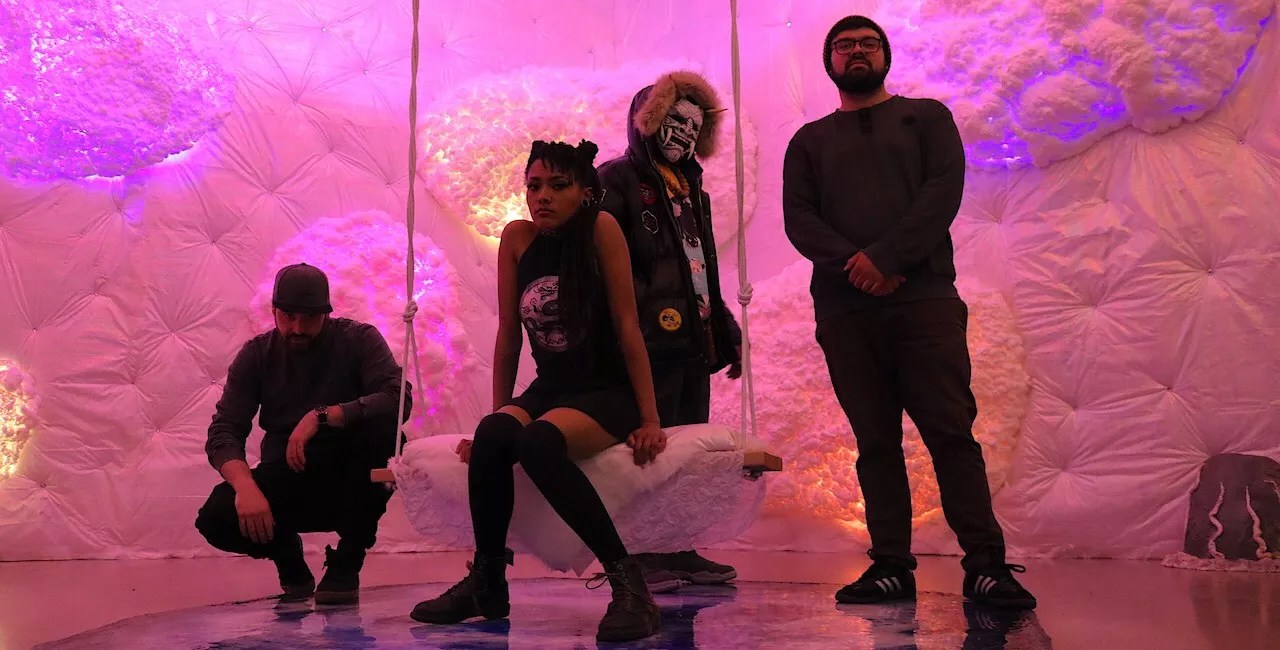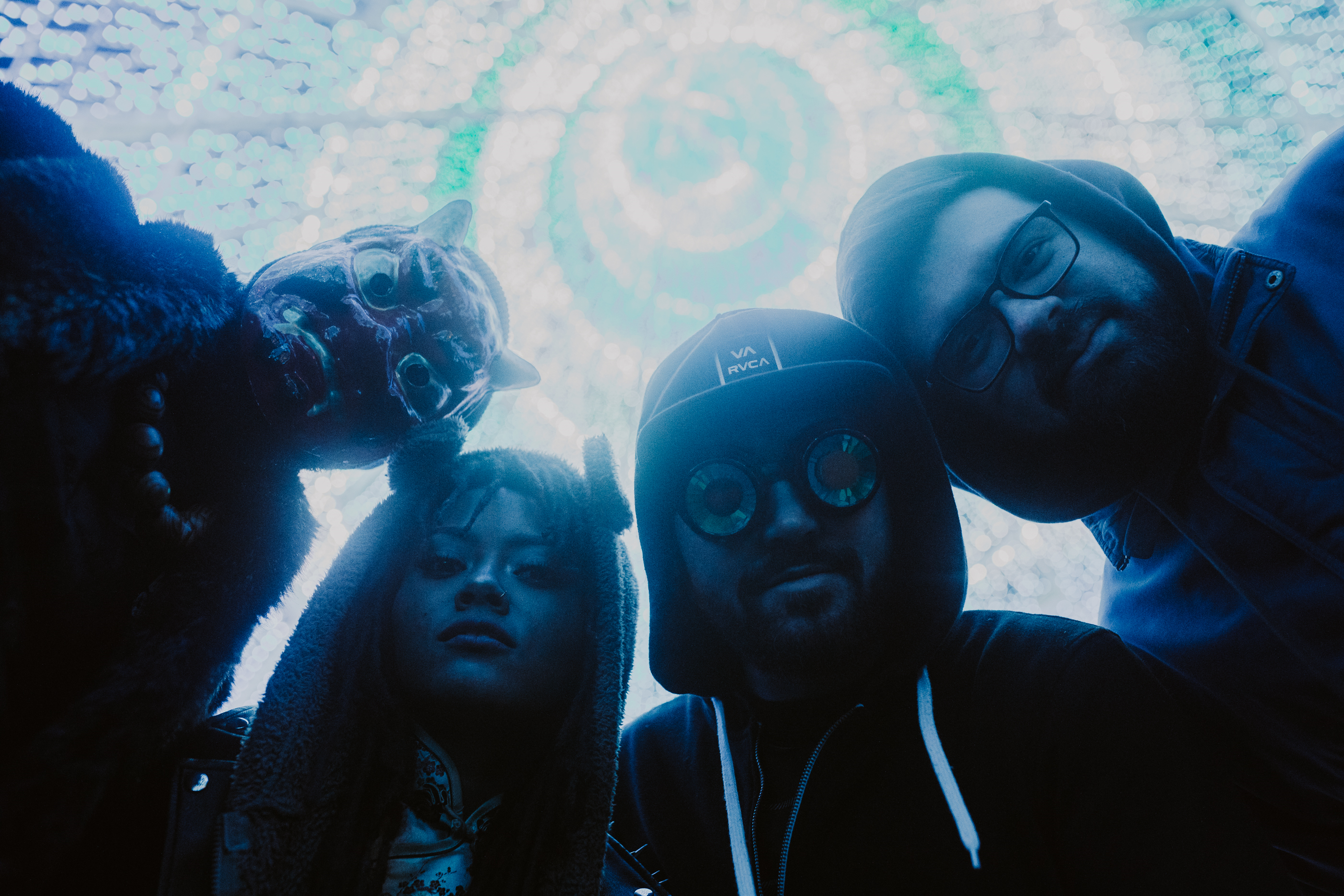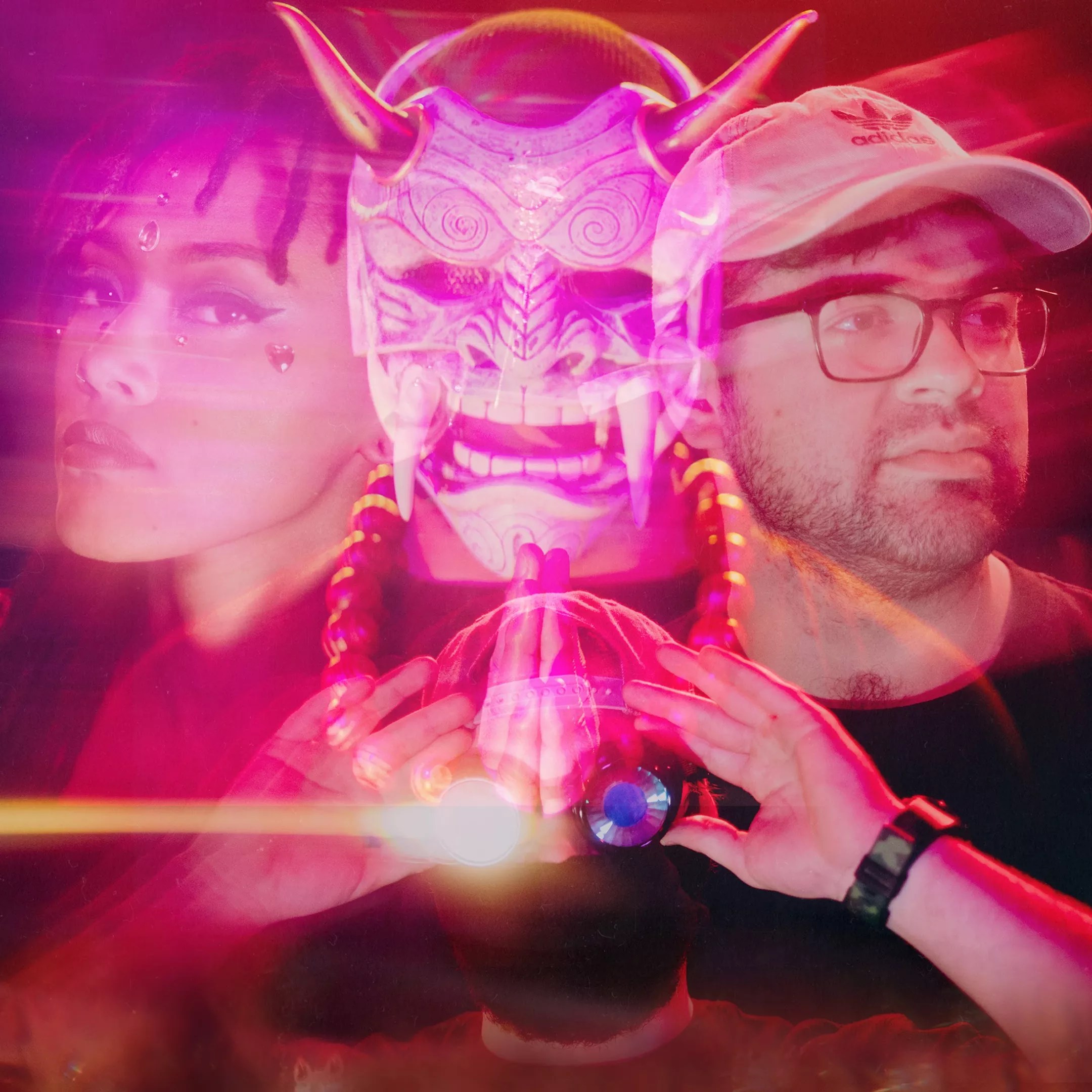
1ne

Audio By Carbonatix
In the United States, the beat keeps us nodding.
Our heads rise and fall in 4/4 time, moving in a mass articulation of yes. We are obedient. In unison. Unbreakable. As long as nobody stops the track, we just keep on shopping and dancing and drinking and rocking and breeding and working and voting and affirming life (no matter how ugly it gets) – nodding “Yes-2-3-4, Yes-2-3-4,” from a song’s beginning to its end, with only enough rhythmic deviation to remind us how comforting predictability is.
Step out of this four-on-the-floor beat, and chaos and cacophony will surely swallow you. Better not risk it. Keep your chord progressions predictable, and always end on the root. You don’t have to listen too hard, because everybody knows what to expect. We’re well trained, and so is our music.
While the entertainment industry has pillaged rich and varied musical traditions from these lands and around the world, once it gobbles up those cultures, it dumps out drive-thru, one-dollar-cheeseburger songs that keep us nodding yes.
And for many, music stops there.
Enter Ramakhandra.
The four Denver musicians who go by only their first names – Annastezhaa on pedal harp and vocals, Clato on bass, Ness on synth, and Nobahdee on drums – have cosmopolitan roots in electronic, reggae, jazz and classical, bringing to the band multicultural influences that expand the possibilities of music, using sounds that summon smells, tastes and textures as much as words or emotions.
Their music is not the obsessive artifice of prog rock, the ear-bleeding technical dissonance of metal or the carefree noodling of jam bands – though Ramakhandra is often paired with acts from those genres. Using a mix of acoustic and electronic instruments, the band creates sounds that are organic, ethereal, even sci-fi, but still conceptually tethered to this planet’s ecological, social and spiritual concerns.
Watching Ramakhandra play is like taking a trip to Delphi to watch the Oracle in action. This is terrifying, prophetic music, but it’s also quiet. If you expect to be dominated, you’ll be disappointed. You have to listen carefully, and if you do, you will probably find something that will change you – maybe even heal you – in the experience.
“It’s important to me to see our music as something for us…something we have control over, something that means a lot to us,” says Annastezhaa. “Having that sort of control over our expression, to me, is resistance.”
The bandmates say that there’s something fatalistic about the group, even in its origins.
Before Annastezhaa joined a few years back, she was busking on the 16th Street Mall. She had spent more than a decade playing violin, including years studying the instrument at the Denver School of the Arts. With her harp and violin in tow, she was putting her background in classical music to work on the street, making money and waiting for something big to happen.
Then it did.
One day around 2017, Clato – who was then playing in a reggae band with Nobahdee – saw Annastezhaa busking. He was blown away by her playing and invited her to see them perform. When she was the only one who turned up, they felt like they’d botched the show – yet she was impressed. And when Clato, who was forming a new band with Ness and Nobahdee, invited her to a practice, she accepted.
“I had been talking her up for weeks: ‘She’s crazy. She’s a virtuoso. She’s amazing,'” recalls Clato. “I set up a practice with me and Nobahdee.”
But the first time Annastezhaa was scheduled to meet them, she didn’t show. When they called to find out what was going on, she told them she was on her way.
“I had all my stuff packed up in the car,” she remembers. “I was sitting in the car about to drive off, crying: ‘I’m not good enough. They’re so cool. I’m just not going to do it.'”
And she didn’t.
“She ghosted us,” Clato says.
“I called her ass quick,” says Nobahdee. “I was like, ‘What is this?’ She was scared. I was like, ‘Oh, hell, no.'”
Afterward, though, “Nobahdee was like, ‘Whatever. She doesn’t want to do it. It might not be worth all the trouble,'” Clato says.
Still, they rescheduled, and Annastezhaa did show up this time, and they have been obsessively making music together ever since.
During the few years that the musicians have worked together, they have taken their time crafting songs, refusing to rush to record or release new music. The album S/T, which drops June 19, will be their first. They recorded it with Bradley Giroux, who’s also worked with artists such as Kamasi Washington and Terrace Martin. Manga artist Shintaro Kago designed the cover, which makes sense, because the iconography of fantasy, anime and gaming culture informs the lyrics.

Ramakhandra makes music for the outcasts.
Juli Williams
The music is undergirded by the revolutionary spirit of reggae, the freedom and sonic experimentation of jazz, and the rigors of classical composition – yet it sounds little like those genres. As much as they rely on a vast array of musical lexicons, Ramakhandra’s songs are also something of an evolving, emergent culture. “We wanted to create a space for those that are pushing and seeking for more,” says Nobahdee, who wears a mask when he performs. “We’re not necessarily playing like everyone is expecting us to. … We’re trying to build that space for us to feel like we have somewhere that’s like home. In America, that flag has never represented myself. When it was made, there were slaves. I would have been a slave. Being a black man in this country has never been a very comfortable situation. When I’m on the stage, people are not saying I’m a black person. I’m an artist.”
That is freedom.
For Annastezhaa, creative control means liberation from the violence and restraints of Western culture. For marginalized people, “what’s naturally ours is not accepted,” she says. “All throughout society and the history of our society, we can’t be ourselves.”
So she wants to make a bold statement, regardless of whether it’s comfortable for listeners. She hopes the music proves that “you can be bold, you can be yourself, you can be abnormal, because what’s abnormal in society’s eyes is an illusion,” she says. “It’s not real.”
Authenticity and genuine expression are everything to her – they have power.

Ramakhandra embraces musical histories to invent new sounds.
Juli Williams
“We are the fire and the flame,” sings Annastezhaa. “We are the water and the wave that breaks forever more. And though we die, we will always rise with terrifying force.”
Ramakhandra’s music urges us to slow down, to stop the endless head-nodding that defines this culture, to quit consuming absentmindedly and instead listen carefully in order to create a spiritual pause, a refuge from the chaos, noise and expectations of this culture.
“It’s important to me to see our music as something for us…something we have control over, something that means a lot to us,” says Annastezhaa. “Having that sort of control over our expression, to me, is resistance.”
“We’ve always built this music to be a reflection of a rebellious energy,” adds Nobahdee. “We all wanted to make music that reflected our own views, emotions and what we wanted to be in the world.”